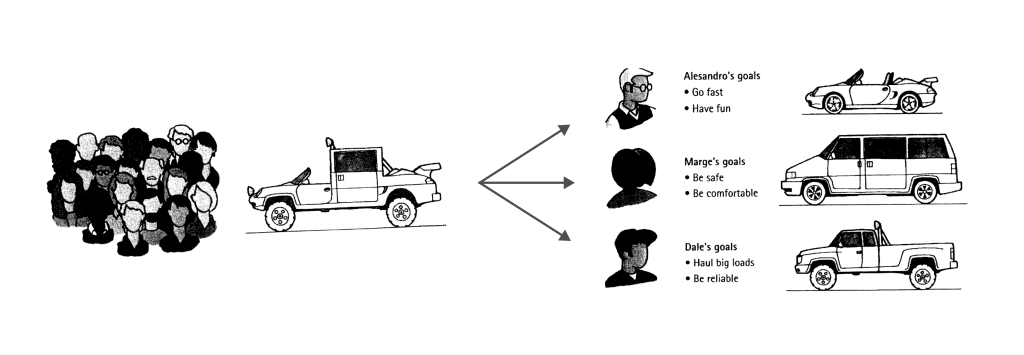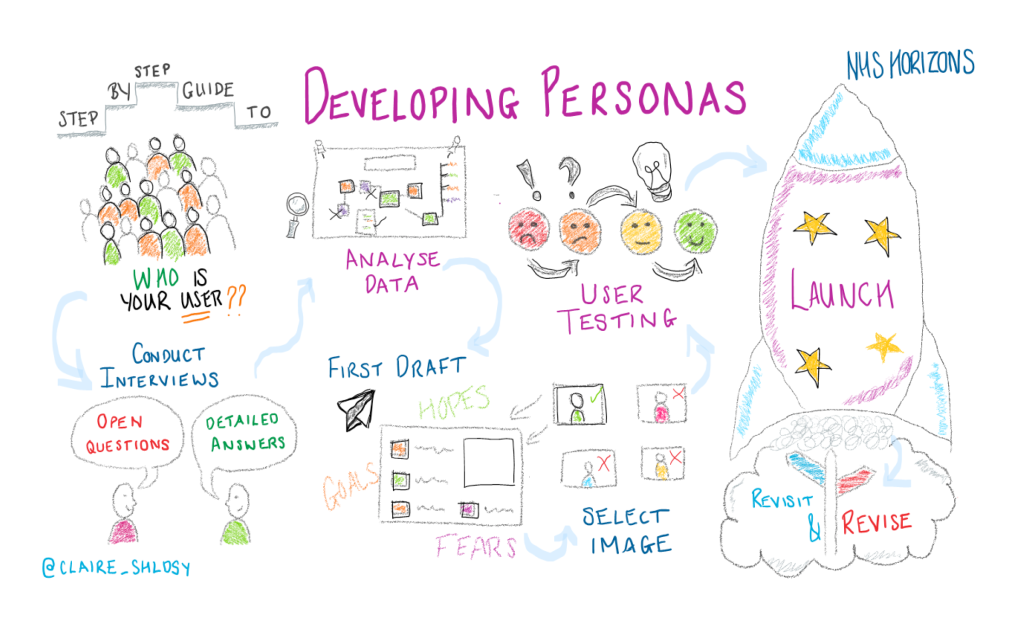“To create a product that [satisfies] a broad audience… logic tells you to make it as broad in its functionality as possible to accommodate most people. This logic, however is flawed.
The best way to successfully accommodate a variety of users is to design for specific types of individuals.”

In this illustration, the author provides an example of different types of cars being designed for different people. An important thing to keep in mind is the potential risk of introducing stereotypes when developing personas. In this case, there’s an obvious difference based on gender in which the men (like Alesandro and Dale) would like faster, more rugged cars for ‘manly’ activities, while the only woman would like something safe for more ‘domestic’ activities. There’s obviously a stereotype at play here that generalizes different kinds of car owners that isn’t necessarily true. It’s essential to be aware of implicit biases and harmful stereotypes that may affect persona development.
Participatory Approaches in Mental Health Research
Personas are increasingly used in research, product design (e.g., apps), education, and healthcare delivery systems and services. However, research-knowledge translation cycles in participatory research are often slow & inflexible.
User centred design (UCD) facilitates collaborations between end users, researchers, developers. UCD seeks to understand motivations and concerns of real-world users throughout design process, which ensures that the product or service is relevant & acceptable for target population.
When developing personas, they should not be created with purely imaginary constructs based on stereotypes. Effective personas should reflect various dimensions of diversity and be considerate of potential biases.
Persona Development — An Overview

The NHS Horizons team was commissioned by the National Workforce Retention Programme to develop a series of personas to better understand our people and their reasons for choosing to stay in the NHS, or leave.
